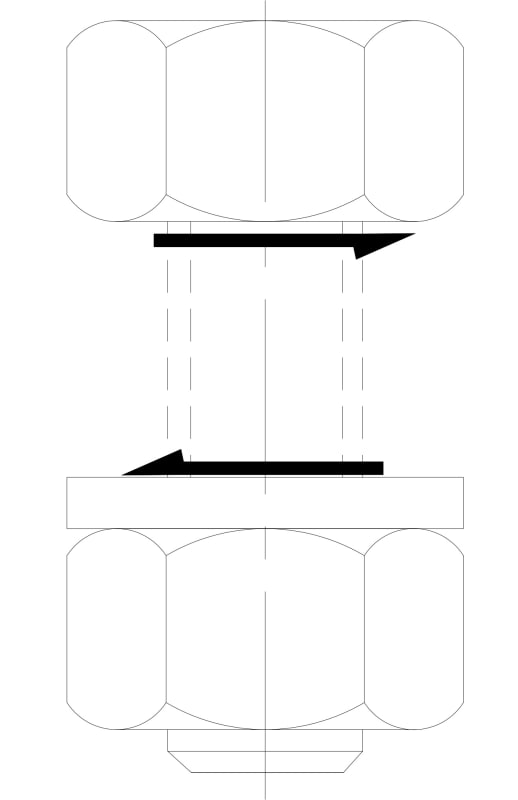DJL Eng
Mechanical
- Nov 9, 2023
- 14
I am trying to determine bolt stresses from a resulting shock load. A component is bolted to a mounting plate and the mounting plate is bolted to a fixed structure (see attached sketch). The system sees some acceleration due to shock. We cannot bolt the component directly to the structure since it would require significant modifications and a design change (negative impacts to cost, schedule, yada yada...). Assume symmetrical loading, bolt patterns, and components. The qty. 12 bolts sit in counterbored holes to prevent contact with the component.
I am mainly concerned with the stresses in the qty. 12 mounting plate bolts. I determined that the bolts are sized such that a preload could be applied to provide sufficient clamping force (thus friction) to prevent slippage of the members. I then treated this like a cantilevered beam and the fixed end is the mounting plate bolted connection. So, due to symmetry of loading and geometry, I assumed half (qty. 6) of the bolts would be in tension. I only solved for stresses due to tension in these bolts after finding bolt/member stiffness.
A coworker of mine says that I should account for shear as well. He says that due to possible variations in workmanship, the bolts could be in bearing when installed and the clamping force would not help in this case. I disagree, but I have been wrong before; what do you guys think?
I am mainly concerned with the stresses in the qty. 12 mounting plate bolts. I determined that the bolts are sized such that a preload could be applied to provide sufficient clamping force (thus friction) to prevent slippage of the members. I then treated this like a cantilevered beam and the fixed end is the mounting plate bolted connection. So, due to symmetry of loading and geometry, I assumed half (qty. 6) of the bolts would be in tension. I only solved for stresses due to tension in these bolts after finding bolt/member stiffness.
A coworker of mine says that I should account for shear as well. He says that due to possible variations in workmanship, the bolts could be in bearing when installed and the clamping force would not help in this case. I disagree, but I have been wrong before; what do you guys think?

